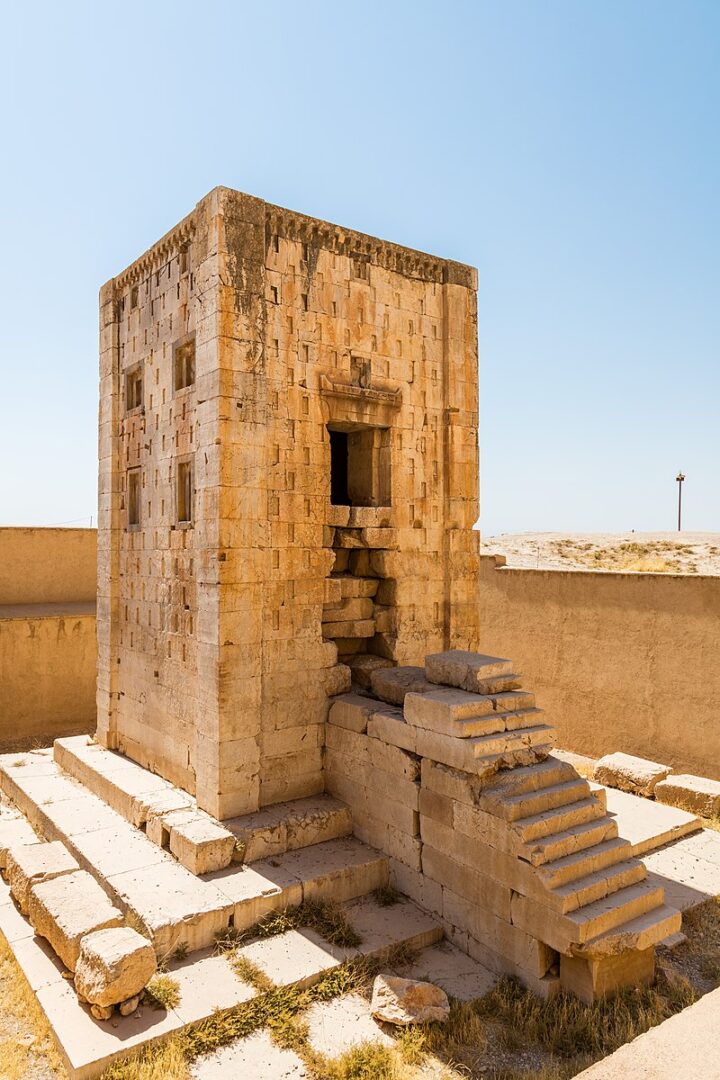Zoroastrian Kaaba: a secret sealed in history
Architecture and decorations:
The architecture of Zoroastrian Kaaba, with carved stones and without using mortar, is an example of the skill and elegance of Iranian architects in ancient times. This building consists of three parts:
Base: A high platform on which the building is placed.
Body: The body of the building is made of cut cubic stones.
Roof: The roof of the building is dome-shaped and made of carved stones.
The decorations of Zoroastrian Kaaba include the following:
Pahlavi inscriptions: inside and outside the building, there are inscriptions in the Pahlavi script that provide information about the construction date and usage of the building.
Inscription of Shapur I: On the south side of the building, there is an inscription in Pahlavi and Greek script of Shapur I Sasanian, in which the description of his victories over Rome is mentioned.
Reliefs: On the north side of the building, there are reliefs of two people and an animal that have not been accurately deciphered so far.
Tourist attractions:
Zoroastrian Kaaba, as one of the important ancient monuments of Iran, attracts many tourists every year. This building, along with other historical monuments of Naqsh Rostam area, including the tombs of Darius I, Xerxes, and Ardashir I, provides a spectacular and attractive collection for visitors.
Importance of maintenance:
Zoroastrian Kaaba, as a national work, is a valuable heritage for the people of Iran. Preservation and maintenance of this historical building is everyone’s duty.


